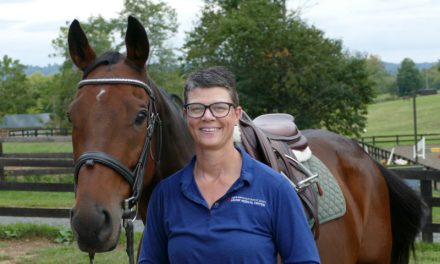by Katherine O. Rizzo (first published in the November 2023 Equiery)
In 1936, President Franklin D. Roosevelt created the Patuxent Wildlife Research Refuge by Executive Order to support wildlife research. The refuge originally covered about 2,000 acres but has since grown to over 12,800 acres across Anne Arundel and Prince George’s counties. Much of the property was once a military base.
The U.S. Fish and Wildlife Service manages the refuge, and the U.S. Geological Survey manages the Patuxent Wildlife Research Center in Laurel. According to Fish & Wildlife, it is the only National Wildlife Refuge in the country that was established specifically to support wildlife research. The Service explains that the refuge “is the largest block of un-fragmented forest between Washington, D.C. and Baltimore, and has been called the ‘green lungs’ of the region.” It is a separate operation from the Jug Bay Wetlands Sanctuary on the tidal portions of the Patuxent River, which is managed by Anne Arundel County; and from the 2,000 acres of the Patuxent River State Park in Prince George’s County, which is managed by the Maryland-National Capital Park and Planning Commission.
The Refuge is open from 8 am to 4 pm every day except for federal holidays and the occasional scheduled hunting days. There is ample trailer parking as well as permanent restrooms and a visitor information station. In addition to riding, hiking and fishing, the refuge has ranger-led programs and is a favorite spot for birders and photographers.
The North Tract holds around 25 miles of multi-use trails and tends to be less crowded than the South Tract, which is also known as the Dan Ashe Division. Horseback riding is only allowed in the North Tract. The trails on the North Tract are mainly wide gravel roads. There are many smaller trails, but horseback riders must pay attention to trail signs as some of these smaller trails are open to foot traffic only.
The refuge is home to many deep-forest songbirds such as the Scarlet Tanager and the Vireo, which hide from predators, within the largest area of unbroken tree cover between Washington, D.C., and Baltimore. Trail users should also keep an eye out for Bald Eagles, American Beavers, and the Spotted Salamander.
One note of caution – the trail guide, which is available on The Equiery website, asks visitors to “stay on marked trails for your safety and the safety of Patuxent’s wildlife. As a former military training site, unexploded ordnance (UXO) are still present in the area.” The U.S. Fish & Wildlife Service also warns that “due to active nearby gun ranges and the risk of unexploded ordnance, visitors must stay on roads and trails.”
The main entrance to the visitor center is at 10901 Scarlet Tanager Loop, Laurel, MD 20708-4036. Contact the visitor center at 301-497-5772 for trailer parking information. Always confirm that the park is open before planning a visit.












